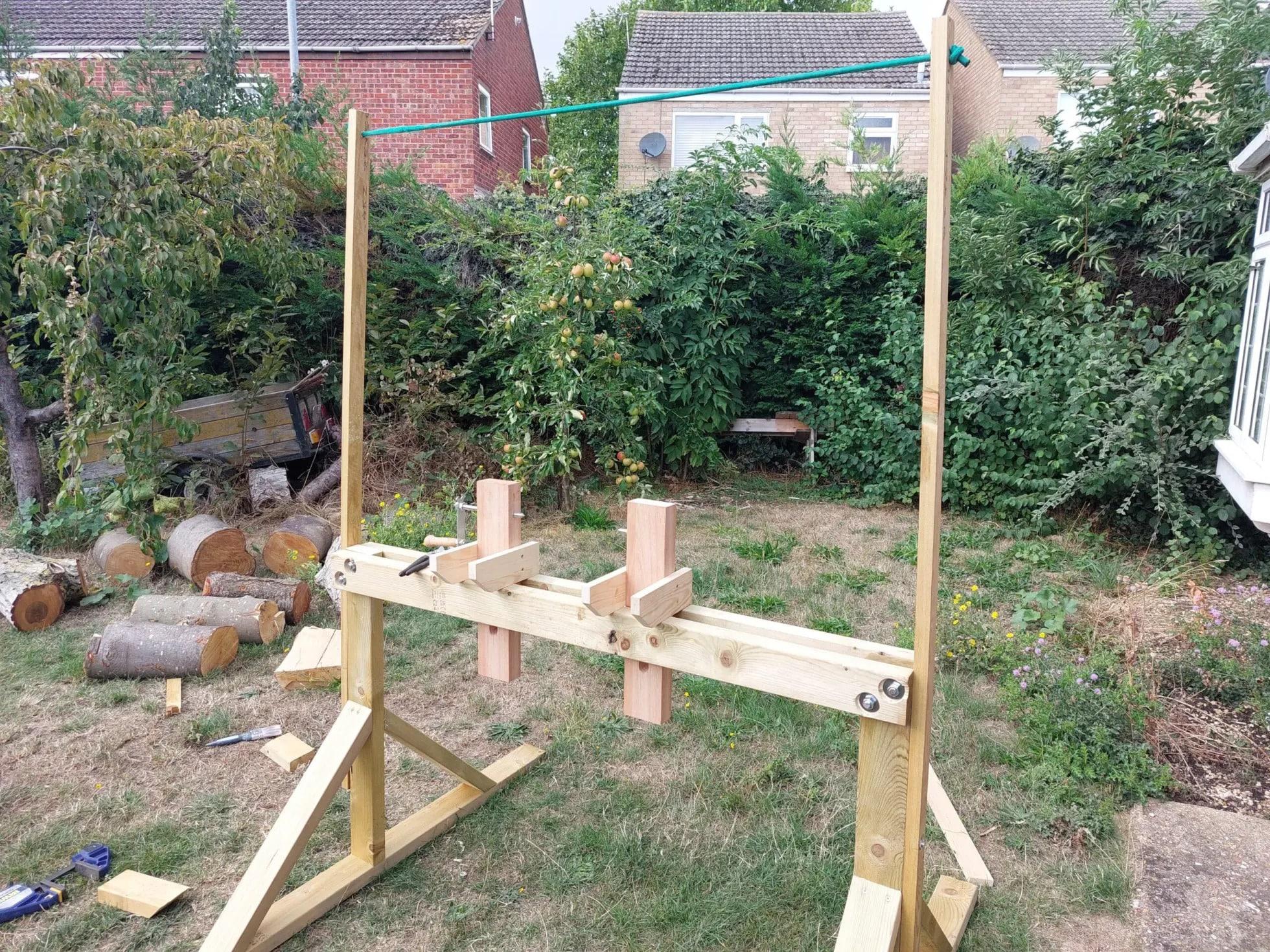
A spindle lathe is a traditional woodworking tool that has been used for 100s of years to create cylindrical pieces of wood, for example, chair legs and components.
A lathe is a woodworking machine with a rotary axis, meaning it spins a piece of wood between two axes. As the wood is spun, the woodworker can apply different gouges to create the desired shape.
How do you use a spindle lathe?
To get a little more technical, it is a reciprocating lathe. As the woodworker presses down on the treddle, the rope (wrapped around the work) is pulled down, thereby turning the wood. At this point, a spindle gouge can be applied to the work to start the shaping process. As the woodworker releases the treddle, the lathe resets itself by spinning in the opposite direction. This is achieved using either a pole or bungee cord. Historically, the lathe would have used a springy pole with a rope attached to it. The rope is wrapped two or three times around the wood so that when the treadle is pushed down, the wood rotates towards the work. On releasing the treddle, the pole or bungee cord pulls the rope back up, resetting the lathe. Originally, woodworkers would have used a sapling to provide the return mechanism.
Spindle lathes are used in different woodwork projects
Many woodworkers find that the spindle lathe is one of the easiest machines to learn, though it can take years to master. Once someone understands the basic concept behind using a hand-held spindle gouge, they can expand on their learning and begin to apply those skills to new projects. The skills learned with this lathe are invaluable in helping woodworkers create genuinely stunning artwork made from wood.
The benefits of using a spindle lathe in woodworking
The spindle lathe is a very versatile device. It allows for the turning and shaping of cylindrical items in wood, such as chair legs and components. It is also possible to turn spinning tops, stair rails, and bed posts…; if it’s cylindrical and wooden, there’s a good chance it could be made on a spindle lathe.
Like the bowl lathe, a spindle lathe can be set up pretty much anywhere with enough space. A key benefit is that it can quickly be taken apart and moved, allowing the woodworker to use the lathe at events. It can also be used in places that don’t have an electrical supply – because the worker powers the lathe.
What wood can you use on a spindle lathe?
Spindle lathes are best used on hardwoods such as ash, beech, and oak. They work best on woods with a high density and medium to high flex. Ideally, you should use greenwood, which is wood that has recently been cut down. This is due to the wood’s characteristic of hardening as it dries. It is possible to turn dry wood. However, if you choose this option, you had better get used to sharpening your tools often.
The drawbacks of using a spindle lathe in woodworking
While the spindle lathe is a very useful tool, it has some drawbacks. It’s slightly more work than other woodworking devices (such as the bandsaw) because it relies on human strength to turn. This might be a problem for people not used to such physical exertion. It also requires considerable manual dexterity to ensure you finish your work well. Personally, this was part of the attraction of using a spindle lathe – it is a skill that needs to be learnt and mastered.
Is the spindle lathe still relevant in today’s woodworking?
The spindle lathe has been used for thousands of years. Its history is long and rich and is undoubtedly an essential part of the past. Today, the spindle lathe and greenwood woodworking is going through a renaissance, with people interested in unplugging and going slower.
Slow living
When I started greenwood woodworking, the key benefit was working outside without a deadline or the need to finish something quickly. As I became more experienced, I spent more time attending events with the Burwash Bodgers, where I could set up a lathe beneath a tree or next to my tent and work on a project. Once you become a competent turner, you can start to relax and let your muscle memory take over. When you do this, you can lose all sense of time, and a few hours can fly by. It feels like you are entering a meditative state where time slows, and daily worries are put aside.
On the subject of setting up a spindle lathe…
Spindle lathes can be set up pretty much anywhere with enough room. You don’t need a lot of specialist equipment to start, and there are many groups you can join to help you learn this ancient skill. Alternatively, you can buy a lathe built to your specs from me, and I can offer greenwood woodworking courses on a spindle or bowl lathe.

In conclusion, woodworking stands as a testament to the harmonious marriage of tradition and innovation. Whether pursued as a hobbyist’s passion or a professional’s vocation, woodworking remains a deeply fulfilling and expressive craft that continues to shape functional, aesthetic, and sustainable elements of our daily lives.